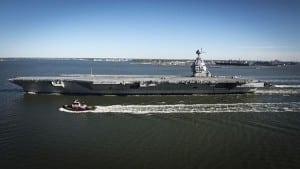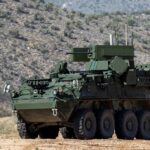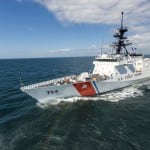
In the negotiated conference version of the fiscal year (FY) 2019 defense authorization bill, House and Senate members agreed to authorize the fourth Gerald R. Ford-class aircraft carrier, three Littoral Combat Ships (LCS), and advanced procurement funds for LPD Flight II San Antonio-class amphibious dock transport ships.The fourth Ford-class carrier, CVN-81, is expected to be the second carrier in a possible two-carrier buy the Navy is considering with shipbuilder Huntington Ingalls Shipbuilding [HII] to save up to $1.6 billion in…

 By
By 











